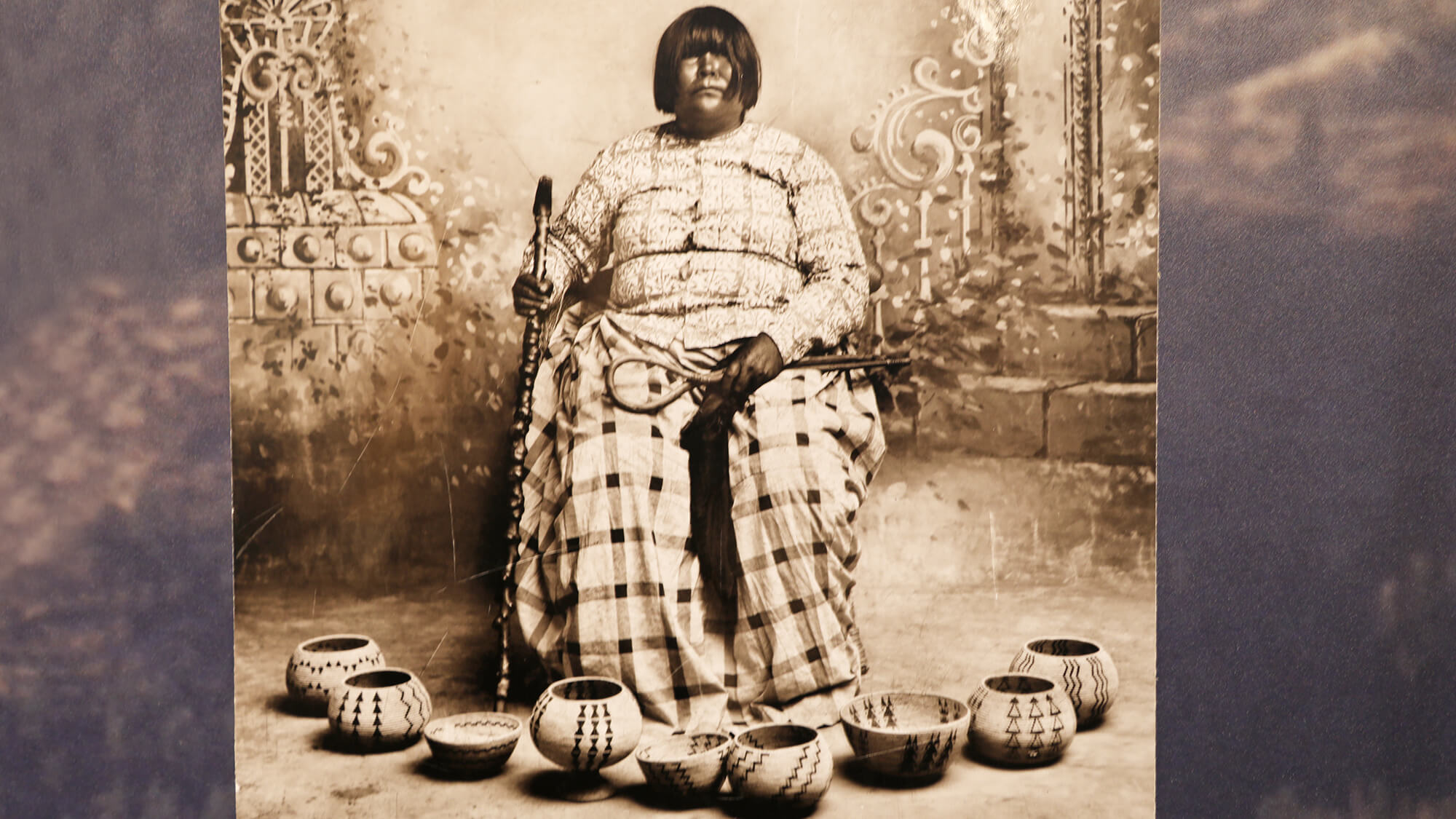
Legendary Nevadans: Shapers of the Silver State Story
Get up close and personal with some of the larger-than-life personalities who helped define Nevada’s own.
The Silver State has always been a magnet to unusual and extraordinary characters. We’re talking Wild West gunmen and frontier survivalists, mining-era female entrepreneurs and American Indian artisans, famous folks like Howard Hughes and Samuel Clemens (AKA Mark Twain), and far more.
Come get up close and personal with some historical figures who helped shape Nevada’s wild, unusual story forever—the folks we like to call Legendary Nevadans. Then discover where you can follow in their footsteps today across museums, ghost towns, historic hotels, and other “old stomping grounds” around the state.
Zero in on the Silver State story with a look at these Legendary Nevadans and their modern-day stomping grounds
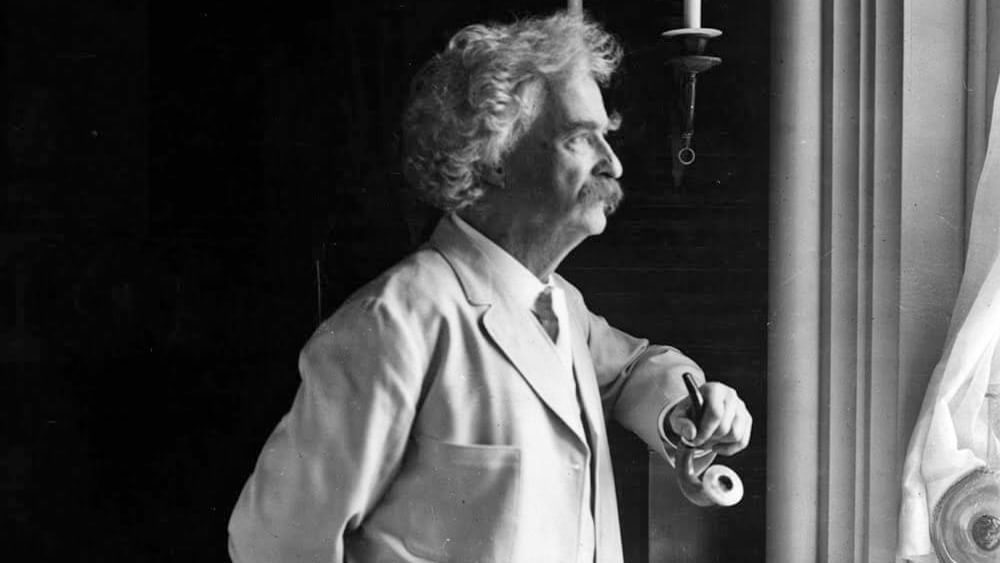
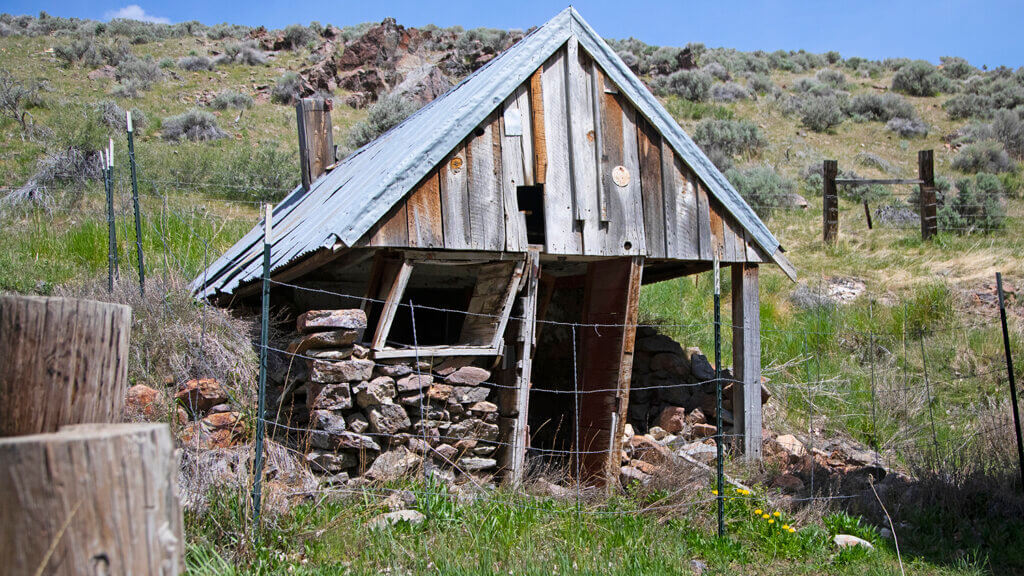
Mark Twain
America’s Most Celebrated Humorist
In 1861, a young Missourian named Samuel Langhorne Clemens tagged along with his older brother to Nevada Territory. It was here that Clemens would discover his distaste for office work, become “allergic” to shovels and gold mining, adopt the pen name “Mark Twain,” and train his ears on the colorful language, fanciful yarns, and bombastic characters that would later inform a life of writing—one that would shape American literature, humor, and culture forever.
Virginia City
Pay your respects at the building that housed the Territorial Enterprise newspaper—birthplace of that famed nom de plume, where Twain spent many long days… as well as the nearby saloons, where he reportedly spent at least as many even-longer nights. Tour Piper’s Opera House, where he first performed on stage, and explore loads more history at the Historic Fourth Ward School Museum.
Lake Tahoe
Judging by the amount of R&R he wrote about spending here, we’re pretty sure a modern-day @MarkTwain would be ‘grammin it up all over Big Blue’s #NevadaSide, where four pristine Nevada State Parks units keep things looking close to the way they were back then.
Carson City
Walk along the Kit Carson Trail to see Orion Clemens’ house, where Twain crashed for a while with his brother’s family, along with many other spectacular homes of the state’s early movers and shakers. The path also takes you to the Nevada State Museum where more intriguing tales await.
Unionville
Twain’s miner’s cabin still stands in the canyon where he learned the hard way, as he observes in Roughing It, that “all that glitters is not gold.” Pack that famous tome and read it by candlelight during a night at the lovely Old Pioneer Garden Country Inn, the charming B&B just down the street.
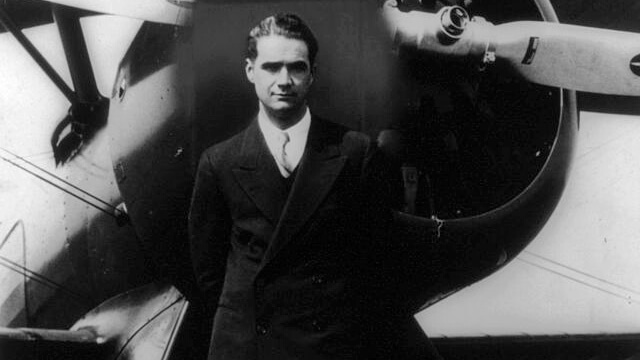
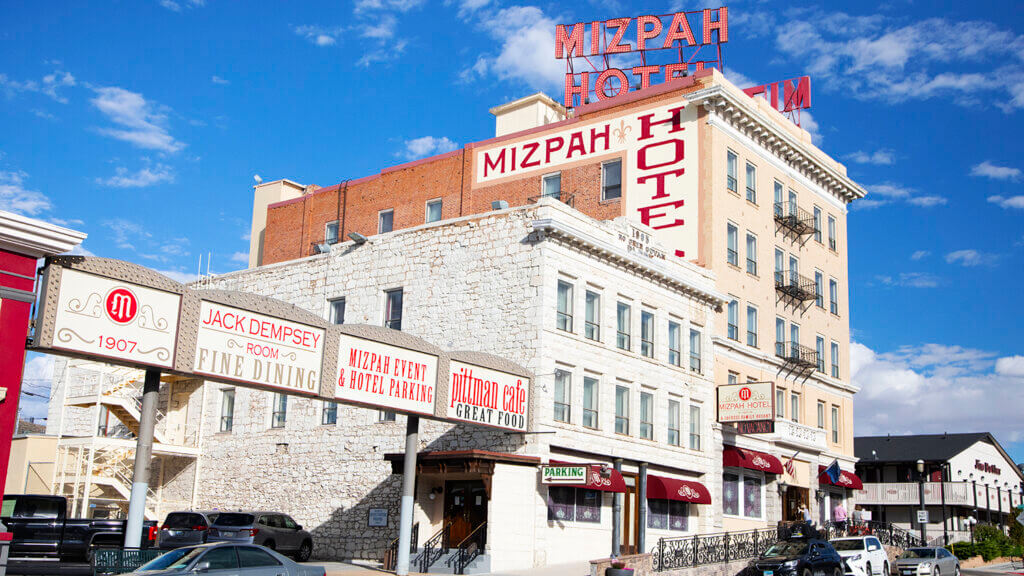
Howard Hughes
Las Vegas’ Notorious Eccentric
Billionaire businessman, generous philanthropist, aviation hero, film producer, and extraordinary eccentric all in one, Howard Hughes captured imaginations, rumors, and headlines all throughout his time in Nevada. However, while his Las Vegas period is his most famous, his exploits actually took him far more places around the Silver State—beyond the confines of the Las Vegas Desert Inn penthouse, where he lived as a recluse for four full years.
Spring Mountain Ranch State Park
Hughes bought this lush oasis in 1967 in hopes of enticing his wife, Jean Peters, to join him in Las Vegas. When the plan failed—and before ever even staying there himself—Hughes sold it. Rather than let it become a planned community, Nevada State Parks bought it in 1974. Today, the park captivates visitors and locals alike with its historic buildings, hiking trails, and even yoga sessions with a Red Rock Canyon backdrop.
Boulder City
In the 1940s, as Hughes discovered, if you were going to crash your private plane, you might as well have done it on Lake Mead, so you could recuperate at the palatial Boulder Dam Hotel, which remains as appropriately period-chic as it was back then. It’s also now home to the fascinating and free Boulder City / Hoover Dam Museum.
Tonopah
Legend has it that the famously swanky Mizpah Hotel—known then and now as “the finest stone hotel in the desert”—was the site of Hughes’ secret wedding to Jean Peters in 1957. More public was Hughes’ return to Tonopah ten years later to scoop up nearly 100 mining claims. Visit the hotel and then chat about it over mining-themed craft beers and house-smoked everything up the street at Tonopah Brewing Company.
Manhattan Ghost Town
Of all the locales Hughes’ business empire had its hooks in, the only place he actually did any mining himself was here. This “living ghost town” boasts a classic Sagebrush Saloon at the threshold to some epic central Nevada backcountry and the nearby ghost town of Belmont (which, of course, boasts a classic Sagebrush Saloon of its own, too—because Nevada).
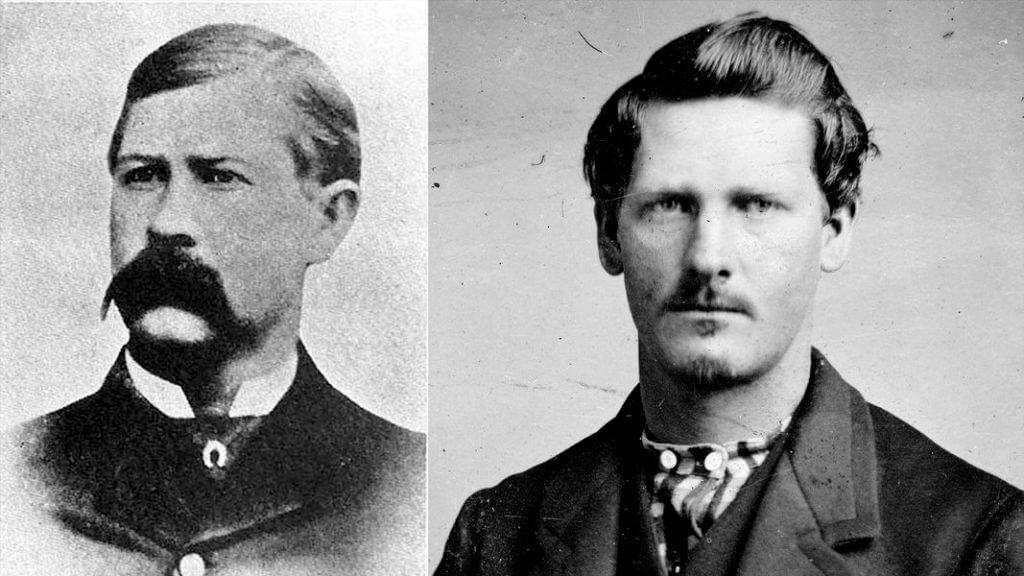
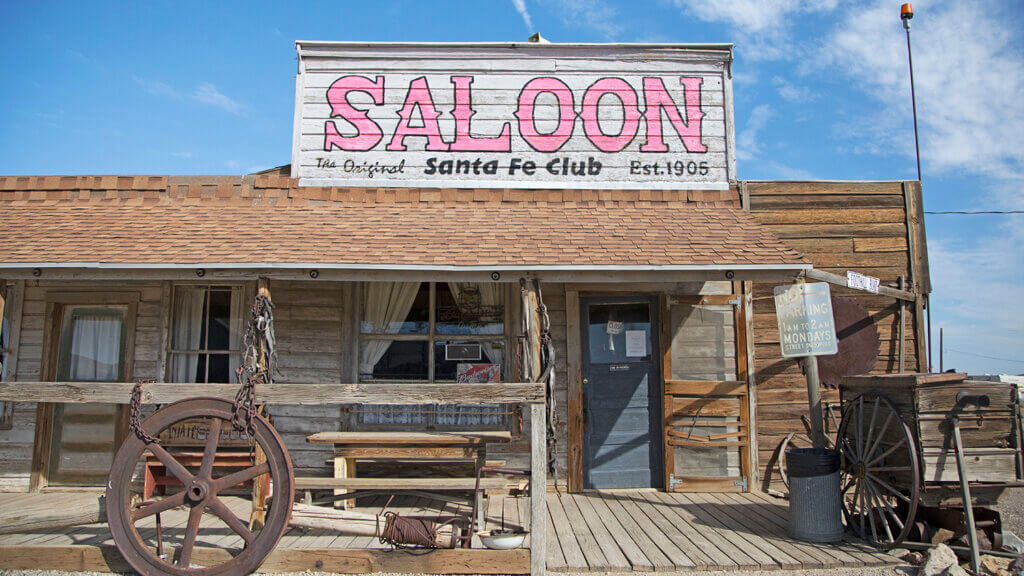
Virgil & Wyatt Earp
Wild West Lawmen (Most of the Time, At Least)
Already famous from his days as an Old West lawman, gambler, and gunfighter in Tombstone, Arizona, Wyatt Earp’s reputation—along with that of his brother Virgil—followed him to central Nevada, complicating chances at a quieter life. Although they were a little too late to the party to hit paydirt during the region’s mining boom, in the early 1900s, the Earp brothers managed to scrape out an honest living and leave a few lasting tales along the way.
Tonopah
Not all historians sanction it, but local lore places Wyatt behind the bar of the Mizpah Hotel’s saloon for a time. Today, you can still bask in its 1900s decadence and enjoy a great cocktail, or learn about all the things that really did happen in the “Queen of the Silver Camps” among the fascinating indoor and outdoor exhibits of the Central Nevada Museum.
Goldfield
One saloon where an Earp was verifiably on the payroll was the National Club, where Virgil was named a “Special Officer”—basically, a glorified bouncer. Even at age 62 and with only one functional arm, the 6-foot-2-inch man made a good peacekeeper, probably with a little help from—as the local paper put it—his imposing pedigree as “one of the famous family of gunologists.” The National is history now, but you can still raise a glass to the Earps among the movie-quality ambiance of the town’s Mozart Tavern and the Santa Fe Saloon—two original elixir emporiums the brothers surely patronized.
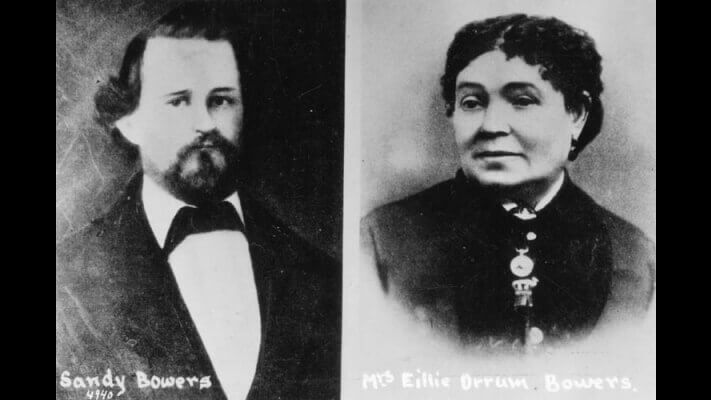
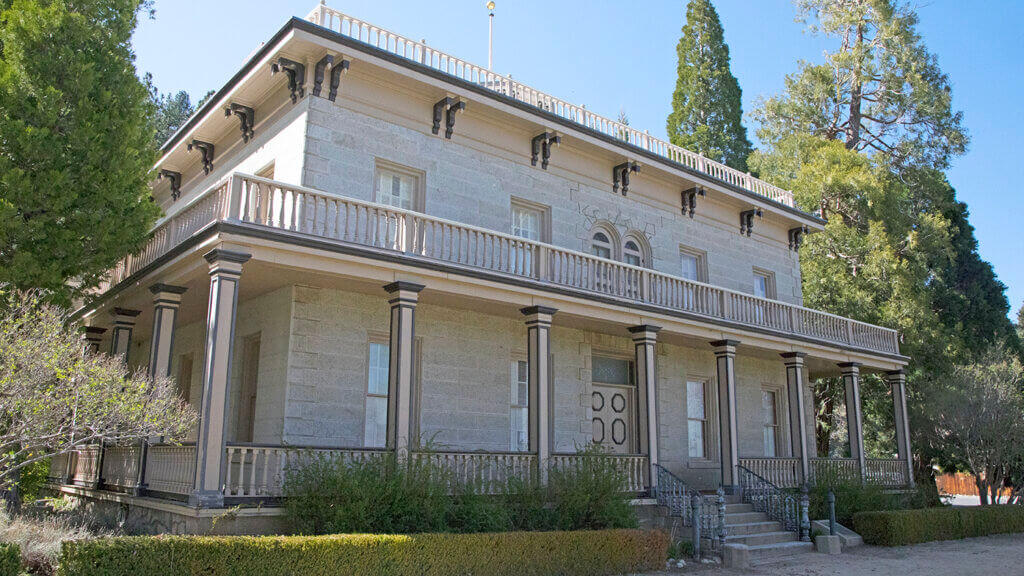
Eilley Bowers
Nevada’s First Lady Millionaire
“Miner – Lodger – Speculator – Fortune Teller.” That’s a helluva resume for anyone from any era, but especially for a woman in the rootin’-tootin’ 1860s. This sharp, industrious businesswoman and all-around absolute badass bucked just about every norm imaginable, braving ups and downs throughout an inspirational life—one we are lucky to have a window into today. Actually, multiple windows, if you mean it literally, at the massive estate she left behind.
Genoa
Not only was Genoa the first Nevada town Eilley moved to, it was also the first Nevada town, period. Today, you can tour Mormon Station State Historic Park, the original location for a trading post built by the Mormon Battalion, to which her second husband belonged (another rarity of the time: Eilley divorced twice and married three times). Then poke around the charming community’s antique shops, lovely cafés, and another Nevada superlative: the famous Genoa Bar & Saloon, “Nevada’s Oldest Thirst Parlor.”
Gold Hill
When Hubby #2 got called back to Utah to help Brigham Young in the Utah War of 1857, Eilley boldly decided to stick around (another “man’s world” mold-breaking move). Soon, the same gold and silver fever beckoning fortune-seekers to the Virginia Range saw Eilley founding and operating a boarding house for miners, as well as running a side-hustle telling fortunes with her Scottish “peep stone.” When boarders couldn’t pay up, Eilley shrewdly “accepted” mining claims as payment, a practice that kicked off a secondary business that would amass her a wide network of mining claims, a massive fortune, and, eventually, the business partner who would become her third husband—and fellow first millionaire in Nevada Territory. Get an authentic taste of the era at the Gold Hill Hotel & Saloon—Nevada’s oldest hotel, opened around 1861.
Washoe Valley
With plenty of money to spend—plus a sweet plot of Washoe Valley real estate won in her second divorce—Eilley (by now, Eilley Bowers) built her dream home in 1863: a two-story, 16-room mansion built with bold new technology and decorated with art and furniture personally purchased from a tour of Europe. The property is no less impressive today. Hop on a seasonal guided tour offer at Bowers Mansion, a property that offers us one of the best glimpses of the tastes and incomparable wealth of Nevada’s Comstock period—as well as a chance to better understand this truly Legendary Nevadan.
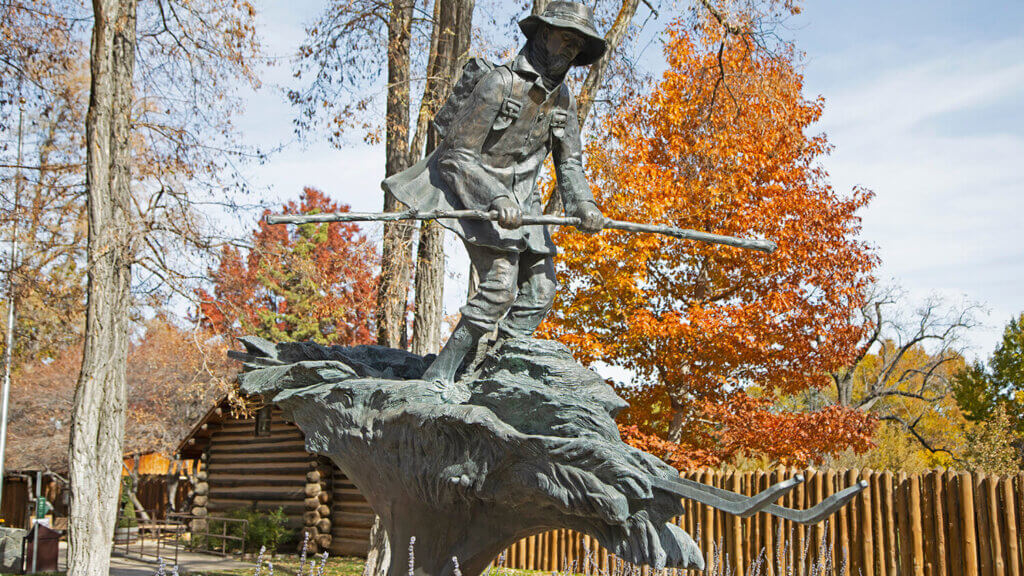
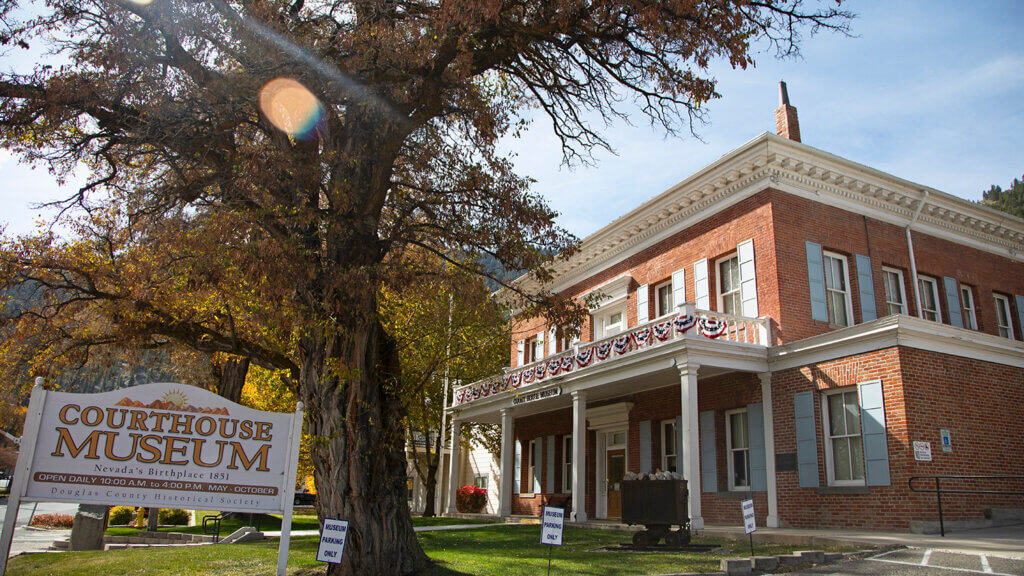
Snowshoe Thompson
Cross-Country Courier, Frontier Badass
Imagine climbing countless flights of stairs for three consecutive days with little rest and a 60-pound pack on your back. That was essentially the level of rigor Carson Valley legend John A. Thompson—better known to history as “Snowshoe” Thompson—endured on each of his 90-mile expeditions between Mormon Station, Nevada and Placerville, California for nearly 20 years. Yeah. Eat your heart out, CrossFit.
Genoa
In 1856, when this large Norwegian learned that the treacherous Sierra Nevada’s 50-foot winter snow drifts essentially cut off all communication between Sacramento and Salt Lake City, he immediately fashioned a pair of 10-foot-long, 25-pound cross-country skis (back then, Norwegians called them snowshoes), took on the job, and set out for Mormon Station (now Genoa). He navigated 7,500-foot passes in up to 80-mph winds, carrying nothing but matches, a Bible, dried meat, and some crackers—not camping gear, blankets, guns, or even a compass—opting to keep his load nice and light.
According to the former president of Genoa’s Friends of Snowshoe Thompson organization, “If it weren’t for Snowshoe, the Comstock Lode might not have taken off, there wouldn’t have been a mint in Carson City, and Nevada might not have become a state,” he says. “He was a linchpin for the Western United States.”
Check out the in-depth display on John “Snowshoe” Thompson’s life and unmatched exploits at the Genoa Courthouse Museum; then salute him in person where he stands in statue form, forever ripping dutifully through those mountains, in front of Mormon Station State Historic Park.
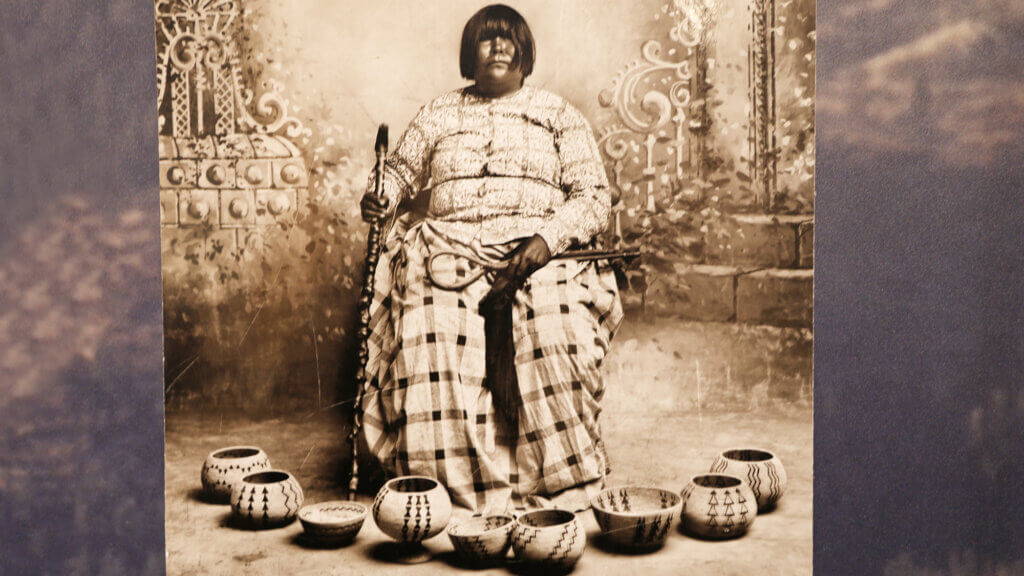
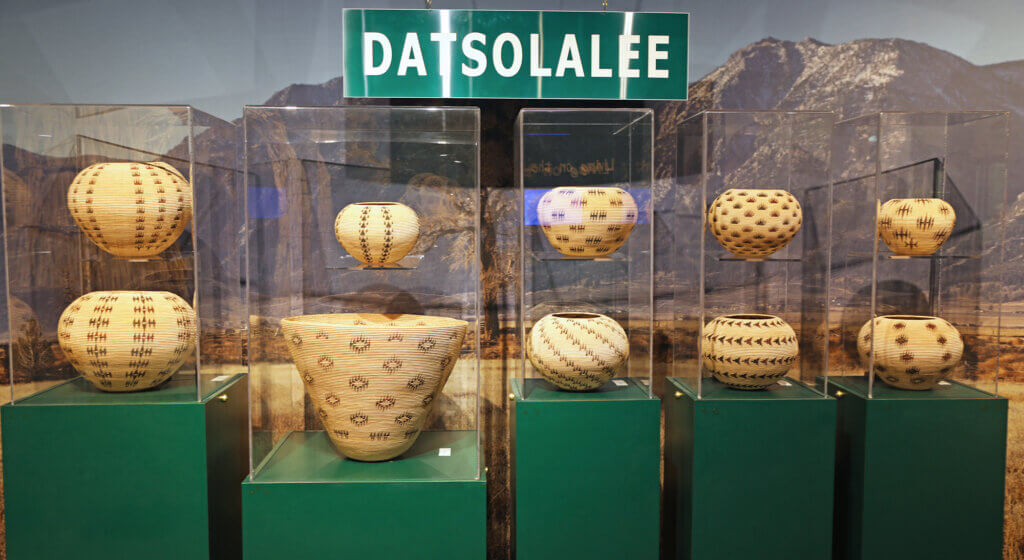
Dat So La Lee
Washoe Basket Weaver Extraordinaire
Quite simply, when it came to hand-woven baskets, no one could hold a candle—or rather, a willow read—to Carson Valley’s Louisa Keyser, otherwise known by her nom d’art, Dat So La Lee. Born to the Washoe people in the mid-1800s, as European Americans began settling Nevada, she had a knack for creating the stunningly intricate baskets Washoe women used to cook, store food, and even carry infants. Initially selling to local shops, as they popped up around the valley, Dat So La Lee’s exceptional style caught the eyes of collectors during the “basket craze” of the early 20th century, landing her art—which commanded thousands of dollars, even in those days—in institutions like the Met and the Smithsonian as examples of the highest form of the skill.
Carson City
Kick off the Kit Carson Trail at Stop 1, the Nevada State Museum, to behold Dat So La Lee’s unparalleled work in person. Then amble along to Stop 25, the one-story cottage and National Register of Historic Places entry where Dat So La Lee lived behind Amy and Abram Cohn, who first hired her as a laundry maid in 1895 and, upon discovering her masterful skill, changed up the arrangement to become her promoters, art dealers, and benefactors—covering all expenses for her and her husband, so she could focus on the work that was becoming internationally known. She lived here until her death, which didn’t find her until after “96 winters” of life.
Reno
More of Dat So La Lee’s unrivaled basket art can be seen on permanent display at the Nevada Historical Society, the state’s oldest cultural institution, which is also home to the American Gaming Archives, a collection of gambling manufacturers’ equipment, research materials, and ephemera.
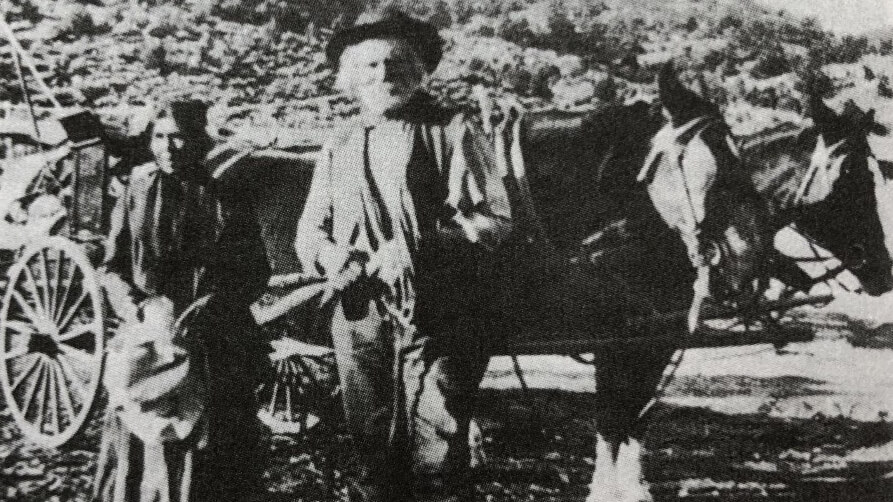
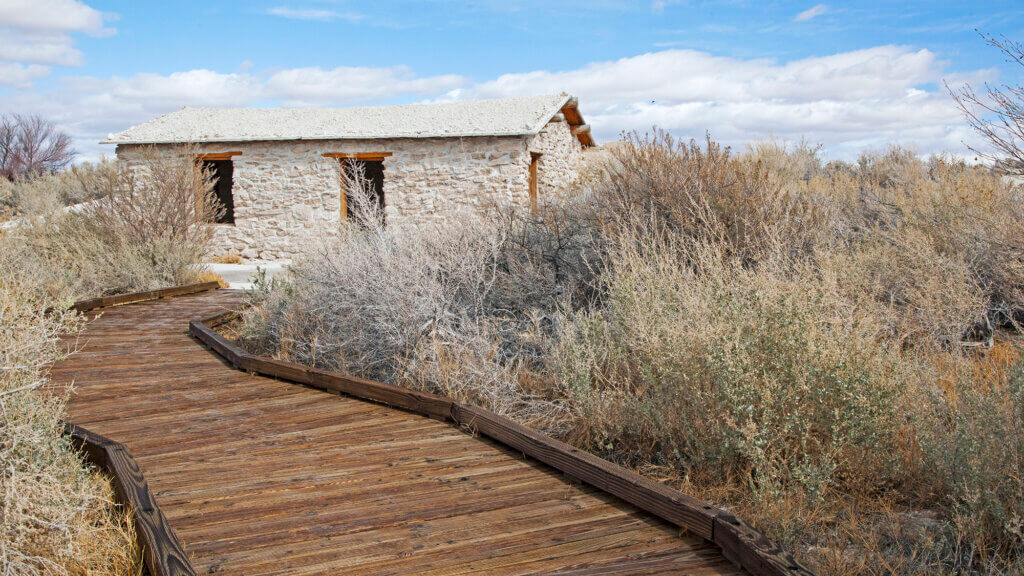
Jack Longstreet
Desert Frontiersman
Although he may sound like we plucked him straight out of a Wild Western dime novel, Jack Longstreet—a gunslinger, trailblazer, settler, miner, and gambler—was the real deal, and was respected and/or feared by just about anyone who crossed his path. While his original name is lost to time (likely due to a past he preferred to keep hidden), we do know he adapted to late-19th-century Nevada’s harsh climate, terrain, culture, and codes in ways few people ever could.
Moapa Valley
Story goes, Longstreet first landed in Nevada near the Moapa Indian Reservation, where he cultivated an amicable relationship with the Moapa Indians and operated a saloon in St. Thomas—a ghost town that was flooded by the creation of Lake Mead (but which is now visible once again)—but left due to a land dispute. Today, you can delve into the stories of Nevada’s American Indian settlers at the fascinating Lost City Museum.
Amargosa Valley
Longstreet’s next known HQ was in the rugged but life-giving lands now within Ash Meadows National Wildlife Refuge, where he was able to eke out a life, yet again, by relying on mutual respect with local tribes. His cabin still stands. As does a spectacularly funky casino-resort that honors him with its name, the Longstreet Inn.
Belmont Ghost Town
Not much is known of Longstreet’s final days. However, we know he spent them at the Red Rock Ranch in Monitor Valley, north of Tonopah. If you’re exploring the area’s sweeping backcountry, swing by the ghost town of Belmont and sidle up to the bar and make a toast in his honor at the 1867-built Dirty Dick’s Belmont Saloon, which, with what we know about him, we’re sure he must’ve visited at least a few times.
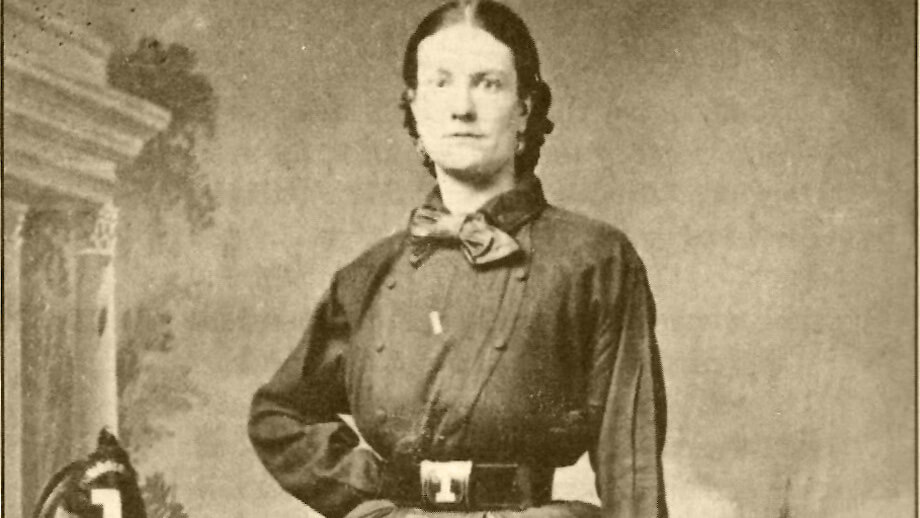
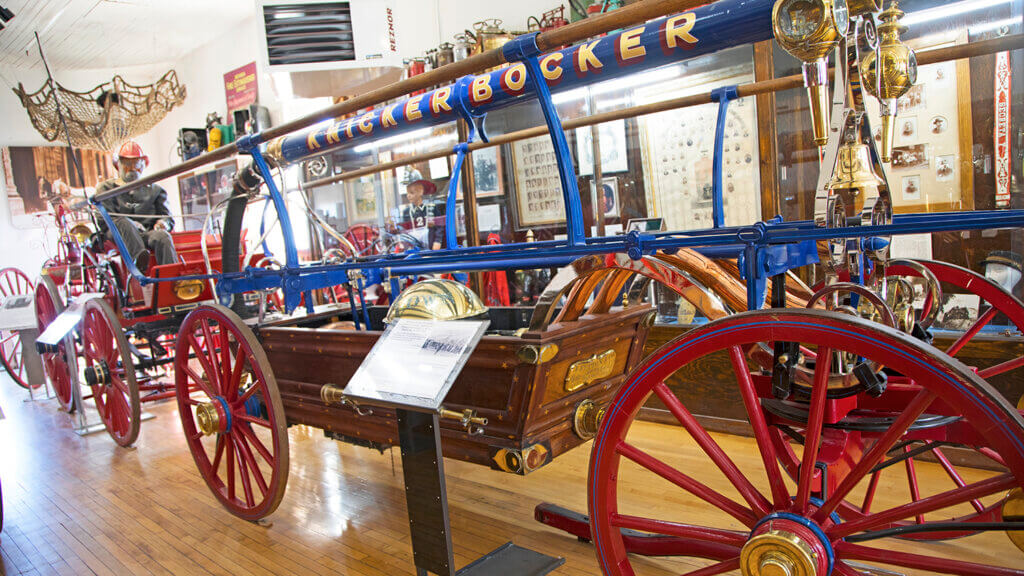
Julia C. Bulette
Nevada’s Most Beloved Madam
Julia Bulette was born in London and raised in New Orleans—although as a placard in Virginia City’s Delta Saloon reads, in those days, it was more popular for women of her profession to be “French.” The profession we refer to, of course, being the world’s oldest. In the early 1860s, the swelling Comstock Lode attracted hordes of miners, along with opportunists to supply them with goods and services. Bulette was among the first of her kind in that latter category. Despite prevailing attitudes of the time—including in Western towns—Bulette captured the community’s adoration and is still celebrated today.
Virginia City
Cruise to the Liberty Engine Company #1 State Firemen’s Museum to check out authentic 19th-century firefighting equipment, much of which Bulette would have encountered in her time as an honorary member of the company, a title she earned by responding to many of the town’s fires, working the brakes on hand pumpers, and nursing the community’s ill. Then bed down in the Cobb Mansion B&B’s Julia Bulette Room, which is adorned with reddish hues and a canopy bed. The proprietors like to emphasize that this room is just a tribute, rather than the room Bulette was murdered in, in 1867—after which the city’s mines, mills, and saloons all closed for a day of mourning, followed by the largest funeral procession Virginia City had ever had or has since. Even the Virginia & Truckee Railroad, which you can still ride today, named a club coach after her.
Goldfield
This one’s a bit of a stretch, but for a good, clean, fun way to get your hands on some Julia C. Bulette history, head to Goldfield’s Santa Fe Saloon, where Bulette’s original bathtub has been on display for decades. (Yes, you can hop in and take a photo.)
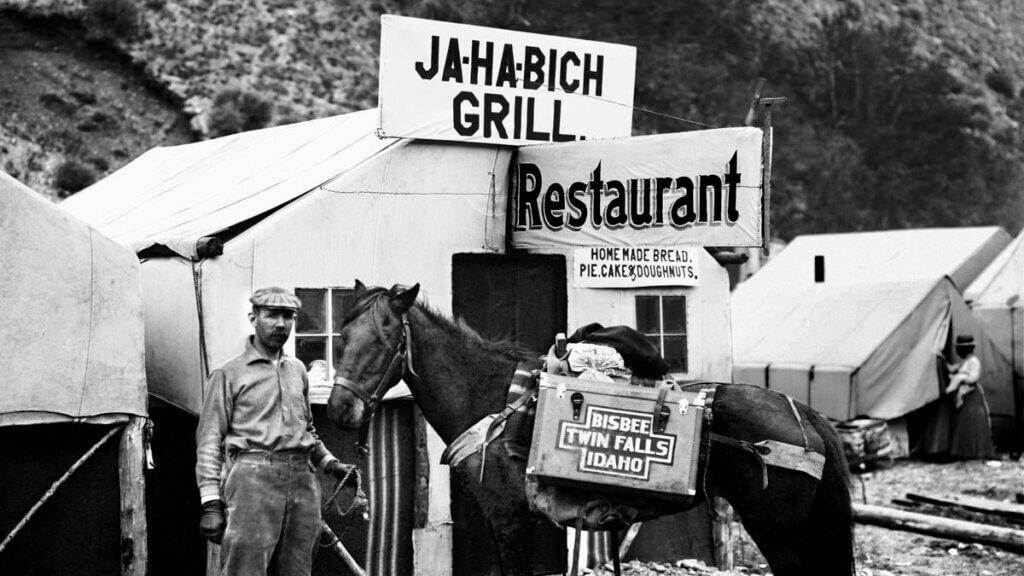
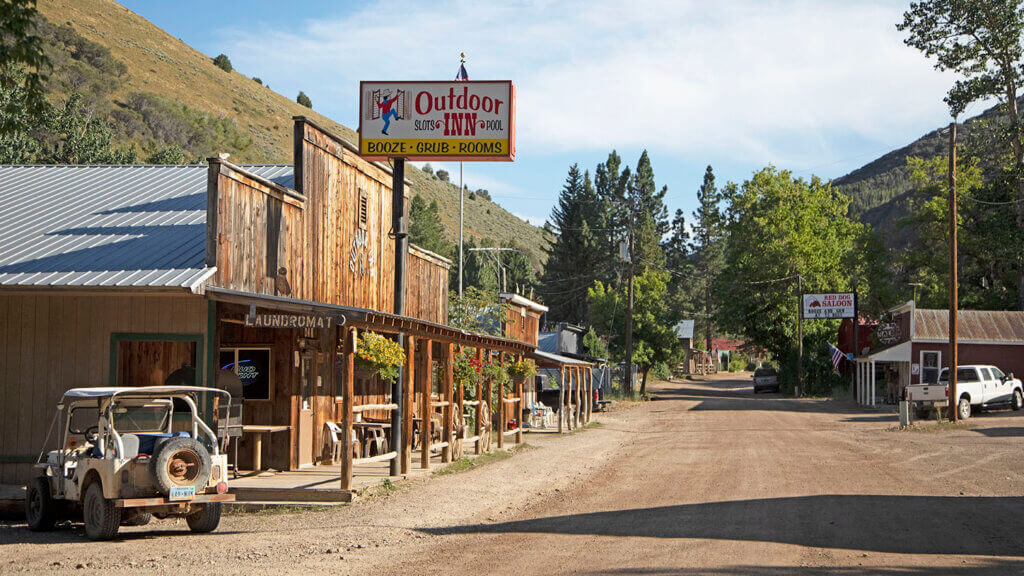
T’Sawhawbitts
Creature of Shoshone Legend
The term “Legendary Nevadan” simply doesn’t get more literal than when we’re talking about this one. According to Shoshone legend, a giant cannibal named T’sawhawbitts (pronounced tuh-SAW-haw-bits) roamed a certain canyon in the far reaches of northern Nevada, hunting for unsuspecting men it would toss into a large basket and carry back to camp for dinner. In 1909, prospectors in the last major gold rush in American history named the canyon after this mythical resident, mispronouncing the Shoshone word as “Jarbidge” (JAR-bidj).
Jarbidge
Today, Jarbidge remains Nevada’s most isolated town, as well as a one-of-a-kind wilderness outpost for world-class fishing, big-game hunting, off-road exploration, unbeatable photography, camping, and more. Depending on the season, up to 100 residents live along the dirt-road main drag, across which downtown’s two bars, the Red Dog Saloon and the Outdoor Inn join forces to keep patrons warm, satiated, and entertained.
Jarbidge Wilderness Area
The community of Jarbidge is surrounded by national forest lands and is a short unpaved ramble up the mountain to access the 100,000-acre Jarbidge Wilderness Area, where vibrant wildflowers and aspen groves blanket slopes that lead up to peaks exceeding 10,000 feet of elevation. There are few slices of scenery more beautiful—or more remote. If visiting, be sure to get familiar with our Dirt Road Code and brush up on our Recreate Responsibly tips to ensure a safe and memorable off-grid adventure.
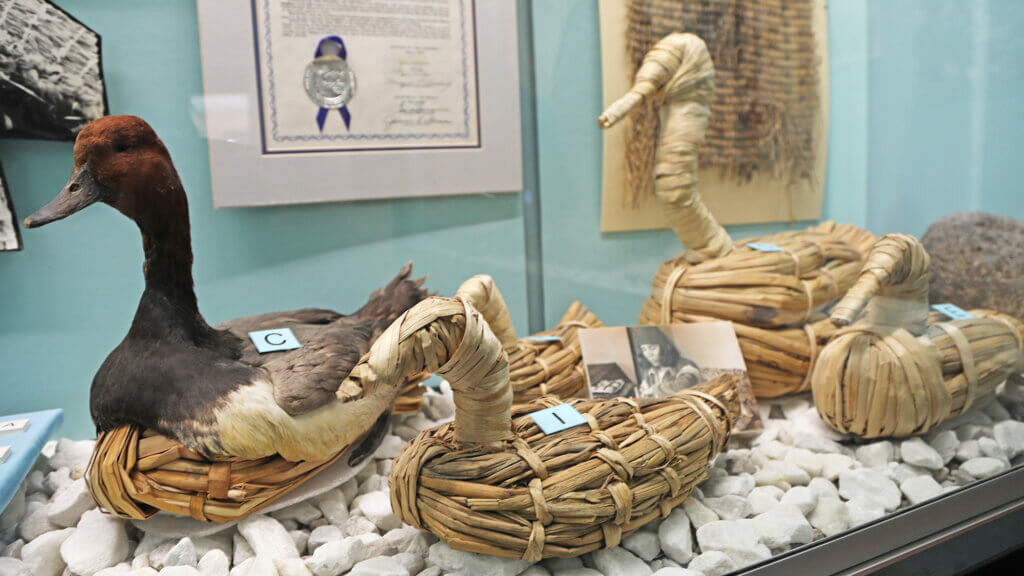
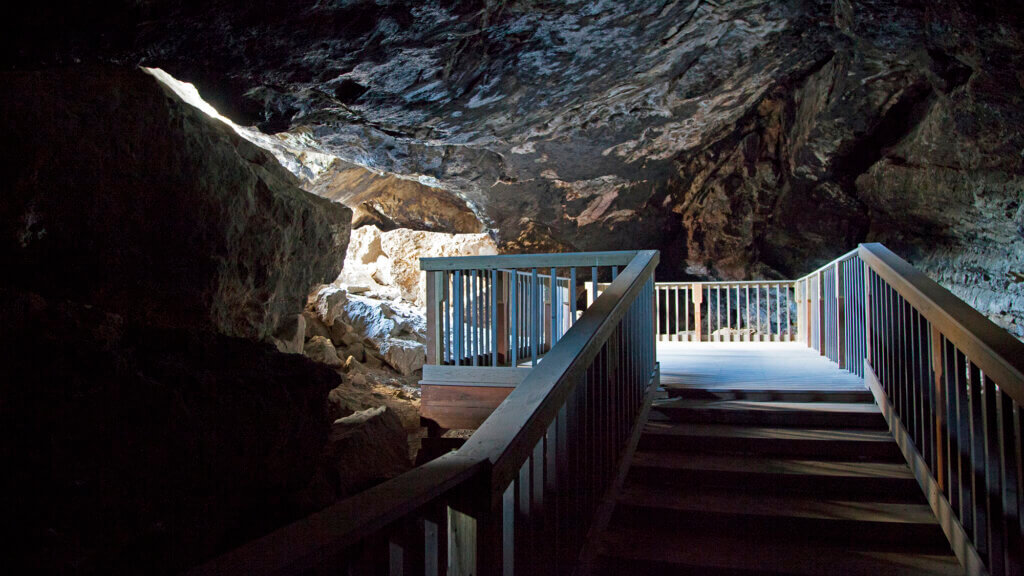
Mike Williams
Living Legend, Paiute Artisan
Simply put, Mike Williams is a living legend. He’s also a Great Basin Paiute who, inspired by his Creator and his culture’s traditions, has spent decades crafting duck decoys out of tule reeds, feathers, and other natural resources found around the Stillwater National Wildlife Refuge, outside Fallon. These modern-day decoys are as close as it gets to the ones made thousands of years ago by his ancestors, including a famous set discovered in Lovelock Cave in the 1920s. These, along with several of Williams’ pieces, are proudly housed in the Smithsonian Museum in Washington DC and are Nevada’s official state artifact.
Lovelock
A 20-mile self-guided tour through breathtaking scenery and locations rich in geologic and human history deposits you at Lovelock Cave, where 60 years of archaeological work uncovered a whopping 10,000 ancient specimens, from skeletal remains to cultural artifacts—including the original set of tule duck decoys mentioned above.
Fallon
Among the Churchill County Museum and Archives’ 14,000 square feet of Nevada history you’ll find the state’s best display of tule duck decoys—including many of Williams’—along with traditional basketry, arrowhead collections, and other artifacts gathered from caves of spiritual importance to ancient tribes. Admission is always free.
Get Inspired
Related Stories
